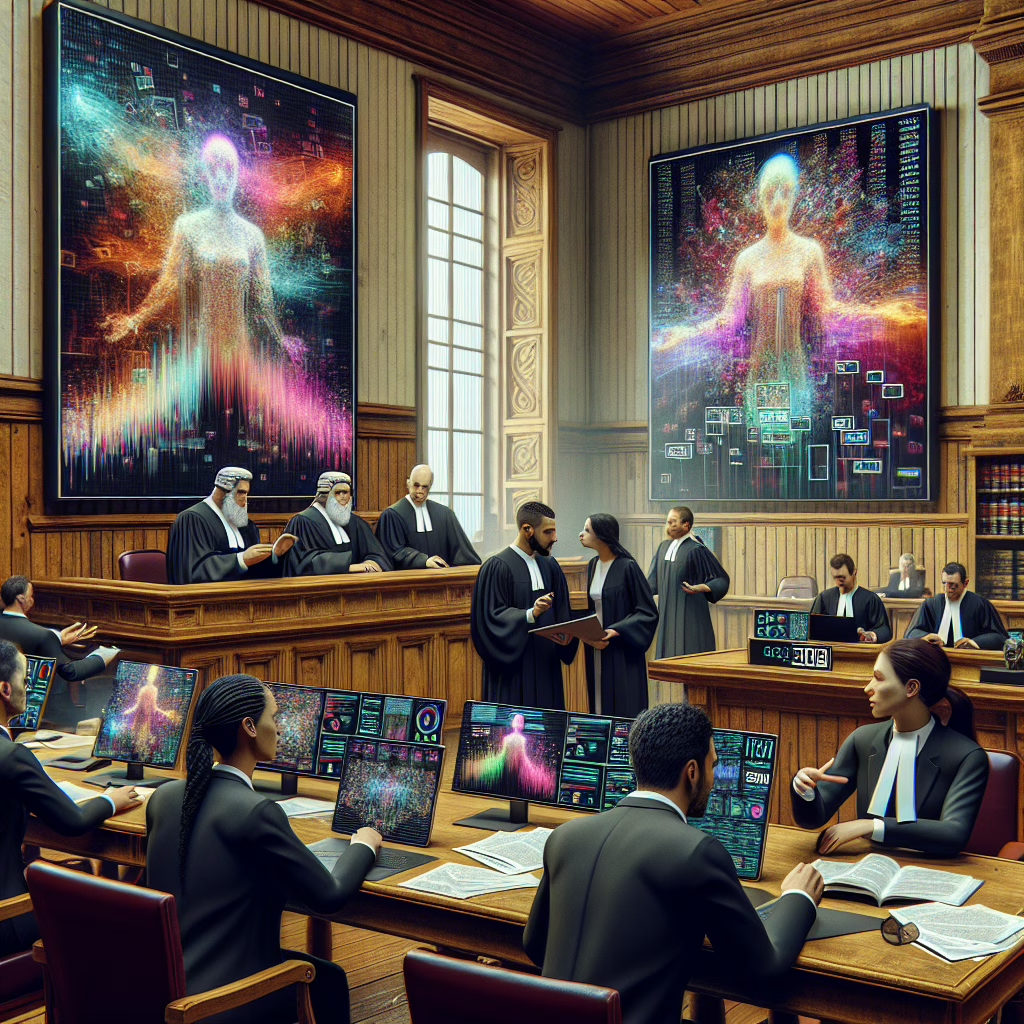In a world where digital art can sell for millions, it’s no surprise that Brazilian courts are now diving into the realm of NFTs and crypto bankruptcy cases. Yes, you heard it right! The courtroom drama has gone digital, and it’s not just a plot twist in your favorite series; it’s the reality of today’s legal landscape.
The NFT Showdown: Courtroom vs. Crypto
Imagine this: a judge wearing a robe, not just presiding over the usual suspects but also over non-fungible tokens (NFTs) and their associated values. This case is about more than just pixels on a screen; it reflects the ongoing struggle between traditional legal frameworks and the ever-evolving world of cryptocurrency.
Recently, a Brazilian court decided to issue subpoenas related to NFTs in a bankruptcy case involving a prominent crypto exchange. It’s a bit like asking if an avocado toast can be classified as a meal—there’s no straightforward answer. But one thing is clear: the court wants to understand how these digital assets fit into the bankruptcy puzzle.
Navigating the Legal Labyrinth of NFTs
As we explore this legal labyrinth, let’s ponder what this means for the future of NFTs and crypto law. For starters, it highlights the need for clarity in regulations surrounding digital assets. If courts are getting involved, it signals that NFT ownership and its implications are now officially on the radar.
But why are we only hearing about this now? The answer lies in the rapid rise of cryptocurrencies and their interconnectedness with NFTs. In fact, Brazil isn’t alone; worldwide, legal systems grapple with defining and regulating these digital treasures. So, what happens when you mix art, tech, and law? You get a recipe for some intriguing courtroom debates!
The Implications of Subpoenas on NFT Owners
For NFT owners out there (yes, you with the pixelated cat), this news raises eyebrows—and perhaps a few heart rates. The subpoenas indicate that if someone declares bankruptcy, their digital assets may be up for grabs. So if you thought your collection was safe in the blockchain fortress, think again! It turns out those cryptographic keys might not be as secure as you thought when faced with legal scrutiny.
- Financial Security: Understand that your digital assets may become part of bankruptcy proceedings.
- Legal Protections: There is a need for clearer legislation around NFTs.
- Market Impact: This development could affect NFT valuations and ownership perception.
However, let’s not panic just yet! The involvement of courts could also pave the way for clearer definitions and protections around NFTs. After all, nothing says “we take your digital art seriously” quite like a subpoena!
A Bright Future for Crypto Law?
Looking ahead to 2025 and beyond, one can only imagine how these developments will shape future regulations. Will we see NFT ownership rights codified into law? Will crypto enthusiasts finally get their much-deserved recognition in legal circles? Only time will tell.
This case in Brazil serves as a reminder that as technology evolves, so too must our legal frameworks. If courts can keep pace with innovations like blockchain and NFTs, we might just find ourselves in an era where both artists and investors can thrive without fear of their pixels being seized by the long arm of the law.
Wrapping It Up: The Intersection of Art and Law
So here we are at the intersection of art and law—a place that many didn’t think would ever exist. Who knew that owning an NFT could come with courtroom drama? As we continue to navigate this brave new world of digital assets, remember: every pixel tells a story, and every subpoena opens up discussions about rights, ownership, and creativity.
If you have thoughts or insights about how NFTs should be treated legally—or if you simply want to share your favorite NFT—feel free to drop your comments below! Let’s keep this conversation going because who doesn’t love discussing pixels at a dinner party?
And a big thank you to CCN for their original article that inspired this piece! Check it out here.
For additional insights into how the intersection of art and technology is evolving, you might find articles like Yuval Noah Harari: ‘How Do We Share the Planet With This New Superintelligence?’ to be interesting.

